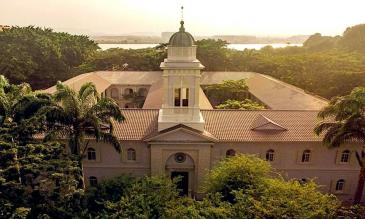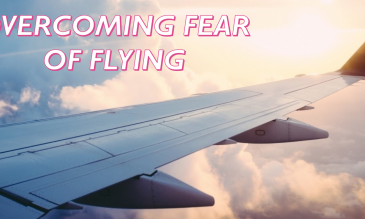- In early January, 1926, “Deutsche Aero Lloyd” (DAL) and “Junkers Luftverkehr” merged, the resulting entity being named Deutsche Luft Hansa Aktiengesellschaft.
- One year later, the Spanish government and Deutsche Luft Hansa, on behalf of the German government, established an agreement that authorized an air service between the two countries, including a capital investment that led to the founding of a carrier now known as Iberia Airlines.
- In 1933, the airline’s name started to be used as “Lufthansa,” and until the outbreak of World War II, the airline pioneered routes across the Atlantic and to the Far East, thanks to a fleet consisting of mostly German-designed aircraft.
- During the war, Lufthansa was only able to maintain service to neutral countries, but all activity ceased in 1945, after Germany’s defeat.
- Lufthansa was revived in early January, 1953, as Aktiengesellschaft für Luftverkehrsbedarf (Luftag), being renamed Deutsche Lufthansa Aktiengesellschaft in August, 1954.
- In 1960, Lufthansa started using Boeing 707 jets on its Frankfurt – New York route, soon to be joined by Boeing 720s.
- In 1964, the Boeing 727 was introduced and started flying from Frankfurt to Tokyo on a Polar route.
- In 1968, the Boeing 737 medium-haul jet joined the Lufthansa fleet.
- In 1970, Lufthansa introduced its first wide body aircraft, the Boeing 747.
- One year later, service to South America commenced.
- In 1979, Lufthansa and Swissair were the launch customers of the new Airbus A310 aircraft.
- In June, 1985, Lufthansa began a fleet modernisation programme, starting with an order for 15 Airbus A320s and 7 Airbus A300-600s, quickly followed by 10 Boeing 737-300.
- Less than a month after Germany’s reunification, Berlin became a Lufthansa destination again.
- On the 18th of May, 1997, Lufthansa, Air Canada, Scandinavian Airlines, Thai Airways and United Airlines formed the Star Alliance, world’s first multilateral airline alliance.
- Seven years later, Lufthansa became the launch customer for the in-flight online connectivity service known as Connexion by Boeing, discontinued in August, 2006.
- In late March, 2005, Swiss International Air Lines merged with Lufthansa, but the agreement allows both companied to be run separately.
- By placing an order for 20 Boeing 747-8 airliners in early December, 2006, Lufthansa became the launch customer of the type.
- In March, 2010, Lufthansa should become the second European airline to operate the Airbus A380, after Air France.
- In May, 2010, Lufthansa joined the ranks of A380 operators in May 2010 becoming the second European airline to operate the Airbus A380, after Air France, and deploying its growing fleet on routes between Frankfurt and Beijing, Houston, Johannesburg, San Francisco, Singapore and Tokyo.
- In 2011, Lufthansa introduced the new check-in interface which guides passengers through the check-in procedure in three simple steps at check-in terminals and online while putting to test Automated Check-in and “Self Bag Drop” terminals.
- On June 1, 2012, Lufthansa conducted the inaugural flight of world’s first Boeing 747-8 Intercontinental passenger aircraft from Frankfurt (FRA) to Washington, D.C., Dulles International Airport (IAD).
- In 2013, Lufthansa achieved top rankings at the “World Airline Awards 2013” in the categories “Best Transatlantic Airline”, “Best Western European Airline”, and “Best First Class Airline Lounge”.
At the 2016 Skytrax World Airline Awards, Lufthansa was honored with two awards: the Best Transatlantic Airline, for the fifth time in a row, and the Best Airline in Western Europe.
As of September 2016, Lufthansa is the first European airline to offer TSA PreCheck. By participating in the TSA Pre✓ program, Lufthansa customers that are eligible (US citizens, dual citizens, lawful permanent residents, and members of US Customs and Border Protection’s Trusted Traveler programs such as NEXUS and Global Entry) can experience an expedited screening process at the security checkpoint of participating US airports.
In October 2016, Lufthansa said goodbye to its Boeing B737 fleet. After ending operations of their Boeing 737-500 fleet in March, the last B737-300 aircraft had its last commercial flights on October, 29, marking the end of an era for Lufthansa. Lufthansa was the world’s first purchaser of 22 Boeing 737-100s in February 1965, and, for almost 50 years, operated a total of 148 B737 of almost all generations.
- On December 19, 2016, Lufthansa received its first A350-900, the most modern long-haul aircraft worldwide. The first regular commercial flight, from Munich to Delhi, was scheduled on February 10, 2017. From 2017, Lufthansa will station its first ten Airbus A350-900 aircraft in Munich. The first flight destinations are Delhi and Boston. The aircraft has 293 seats – 48 in Business Class, 21 in Premium Economy, and 224 in Economy Class.
- In December 2017, Lufthansa became the 10th airline to receive the prestigious Skytrax 5-star certification. As the first and only European airline to be holding this award, Lufthansa painted a special “5 Starhansa” livery on an Airbus A320 and a Boeing B747-8.
- In 2018, Lufthansa introduced a new brand design with a refreshed livery. The encircled crane, its corporate symbol celebrating its 100th anniversary, was retained, but the background was changed from yellow to dark blue. This is Lufthansa’s first major redesign in about 30 years.
- In March 2019, Lufthansa placed an order for 40 long-haul aircraft for its fleet replacement and expansion, its first 20 Boeing B787-9s and 20 additional Airbus A350 900s. The latest Airbus order brings to 45 the total A350 900s orders of Lufthansa Group, the biggest Airbus operator.
- On March 19, 2020, Lufthansa canceled 95% of flights due to the travel ban because of the COVID-19 pandemic. Consequently, the Lufthansa Group incurred losses of 1 million euros per hour by April 2020. In June, Deutsche Lufthansa AG shareholders voted in favor of accepting state aid. The Lufthansa Group received a 9 billion euros in government assistance, and the German government took a 20% stake via the Economic Stabilisation Fund.
- In January 2021, Lufthansa announced it was losing 1 million euros every two hours, “a significant improvement” over the low point of the COVID-19 crisis. In March, the German airline announced a record loss of €6.7 billion for 2020 compared with a profit of €1.2 billion for 2019.
- In September 2021, Lufthansa was the first European airline to introduce the new Airbus’ Airspace cabin onboard the A320 family aircraft. Thus, Lufthansa offers an improved travel experience on short and medium-haul routes with the new innovative cabin that features more seating comfort, 40% larger luggage compartments, and a modern lighting concept.
- In March 2022, the Lufthansa Group announced an operating loss cut by more than two-thirds for 2021 but remained in the red with a 2.2 billion euros loss.
- Since 1955, Lufthansa faced 7 hull-loss accidents, with a total of 182 fatalities. The worst of them occurred in November 1974, when a Boeing 747-130 crashed shortly after taking off in Nairobi, and 59 of the 157 people on board perished.

 En
En Es
Es Fr
Fr







